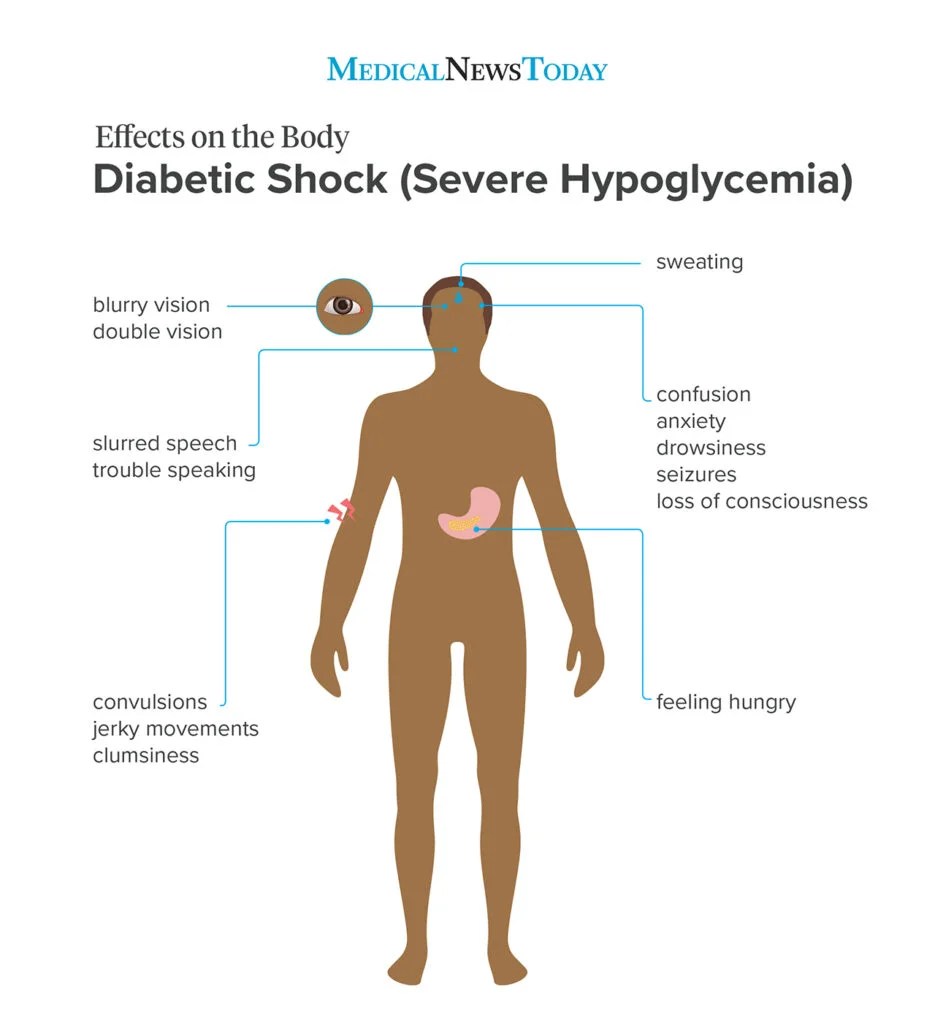A diabetic coma is a life-threatening complication of diabetes that occurs when blood sugar levels become dangerously low (hypoglycaemia) or extremely high (hyperglycaemia). In this condition, a person with diabetes becomes unconscious and unresponsive to external stimuli-–a true medical emergency needing urgent care.
What causes it?
There are three major pathways that can lead to a diabetic coma:
Severe low blood sugar (hypoglycaemia) – often in people taking insulin or certain medications.
Diabetic ketoacidosis (DKA) – typically in type 1 diabetes, when insulin is insufficient and the body breaks down fat producing acidic ketones.
Hyperosmolar hyperglycaemic state (HHS) – usually in type 2 diabetes, marked by very high blood sugar and severe dehydration, sometimes without significant ketones.
Contributing factors include skipped insulin doses, uncontrolled illness/infection, heavy alcohol intake, or unplanned exercise without adjusting food or medication.
Warning Signs to Watch For
When blood sugar is very high (hyperglycaemia / DKA / HHS):
Excessive thirst, frequent urination, very dry mouth/skin.
Vomiting, abdominal pain, nausea.
Fruity-smelling breath, deep rapid breathing.
Confusion, drowsiness or loss of consciousness.
When blood sugar is very low (hypoglycaemia):
Shakiness, sweating, hunger, irritability, dizziness.
Blurred vision, slurred speech, lack of coordination.
If untreated: seizures, unconsciousness, coma.

How to Prevent a Diabetic Coma
●Regularly monitor blood sugar and follow your treatment plan carefully.
●Never skip meals or medications, especially if you take insulin or other glucose-lowering drugs.
●When sick or under stress, check blood sugar and ketone levels more frequently (especially if you have type 1 diabetes) and stay hydrated.
●For those with hypoglycaemia-risk: keep fast-acting carbohydrate (juice or glucose tablets) and if prescribed, glucagon at hand.
●Educate family, friends and carers about warning signs and what to do in emergencies. Wearing a medical ID bracelet may help.
When to Seek Emergency Help
If you notice symptoms of dangerously high or low blood sugar — especially confusion, drowsiness, inability to wake up, or someone has collapsed — call emergency services immediately. Do not attempt to give food or drink if the person is unconscious.
A diabetic coma doesn’t appear out of the blue – it is usually the result of warning signs being missed or ignored. By staying vigilant, monitoring regularly, and being prepared to act, people with diabetes and their caregivers can significantly reduce the risk of this dangerous emergency.


